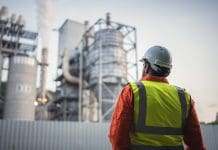The dangers of developing work-related illnesses in the construction sector is not a key factor in the shortage of skilled workers
The threat of injury or contracting a work-related illness is not a key reason for the mounting skills shortage in the construction sector, according to industry experts. People are driven by other factors when choosing construction as a career.
Matt Durant, of BAM Construction Training said it was down to money, and that the risk factors associated with working in construction were not always a consideration.
“With all due respect, the majority of construction workers are not interested in stats and statistics,” he said.
“Money is the key motivator in this industry and the jobs that involve more risks incur higher pay.
“For example, operating large machinery such as cranes, excavators and telehandlers will pay a much higher hourly rate than a labourer.”
In the past year, Health and Safety Executive (HSE) figures show 69,000 construction workers suffered illness as a result of working in the sector, while 65,000 sustained an injury at work. According to the data some two in three suffered musculoskeletal disorders, while one in five were reported as experiencing stress, depression or anxiety. However, these factors are not stopping people from entering construction as a career and thus exacerbating the skills shortage.
Head of lending at Regentsmead Ashley Ilsen said: “I don’t think changing these levels will necessarily attract more people to the construction industry, I think this is more down to other elements such as pay, working hours and conditions and career development.”
The construction sector is undoubtedly a risky industry and accidents do happen. However, it is also an industry that has worked hard to improve safety and ensure risks to employees is greatly reduced. To combat health related illnesses and injuries in construction the HSE launched the ‘Help Great Britain Work Well’ strategy.
Speaking to Development Finance Today, a spokesperson for HSE said: “Although there have been big improvements over recent years in reducing the number and rate of injuries to construction workers, workers continue to be affected by serious ill health issues.
“These issues can be devastating for individuals and families. #helpGBworkwell involves a greater focus on tackling ill health issues at work and promoting broader ownership of health and safety.”
The spokesperson added: “The Construction (Design and Management) Regulations 2015 place a duty on all those involved in a construction project, including clients and designers, to ensure that the construction work is carried out without risks to health or safety.
“During visits to construction sites, HSE inspectors will be holding to account those duty holders who fail to control risks to health or safety.”
Kevin Fear, health and safety strategy lead at Construction Industry Training Board (CITB), said it was vital to make sure the sector is as safe as possible. This, he said, is achieved through raising awareness.
“We are also developing new methods to implement health and safety awareness in our training.
“CITB apprentices are currently trialling new wearable ‘skins’ technology, which gives the learner a simulated experience of how construction-related diseases [such as] dermatitis and tinnitus feel.
“The aim of the trial is to shape the attitudes and behaviours of construction workers to ensure protective equipment is always used.”













